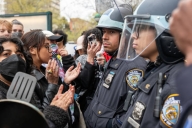You have /5 articles left.
Sign up for a free account or log in.
One good thing that I hope emerges from our whole discussion on curricular video and copyright is an extension of this conversation to include video projects.
The real pedagogical action around video is not viewing, but creating.
Yes, the option to incorporate full-length videos in our curriculum, be these documentaries or feature films, is an essential tool for teaching. Many of our learners learn best from video. Much of the content we want to cover is covered best by video. But it is also true that the options for getting video to the eyeballs of our students is expanding. Between Hulu, YouTube and Netflix streaming, a creative professor partnering with a curricular media specialist, subject matter librarian, and learning designer can find great video to match many teaching and learning goals.
Just because substitutes and options exist to replace streamed videos does not mean that this is the best strategy to pursue. The value of a university video (DVD) physical library increasingly centers on the ability of students to utilize these DVD's as source media for video projects.
I think we will see a large scale move away from video being used in courses as simply another curricular source (along with books, articles etc.), towards the diffusion of media projects. Two things are coming together that will support this trend toward a growth in media projects.
First, we are all gaining an increased appreciation and understanding for the pedagogical value of media projects. The skills that students must learn to create a media project increasingly align with the creative and analytical skills necessary for professional employment. Beyond gaining skills for employment, media projects are great tools to promote active learning, as by definition a media project turns a student into a creator. Media projects encompass key skills, such as writing (the script), collaboration (most of are done in teams), making arguments with evidence and presenting persuasively in a way that holds an audience interest. A fair portion of our students who are visual learners and non-linear creators excel in media projects in ways they never could if the final project was only a term paper.
The second reason I think that we will see an increased demand for media projects amongst our faculty (and students!) is that the tools for creating and sharing these projects have become cheaper to acquire and easier to use. On our campus we have our students create their media projects with iMovie. A new idea we are experimenting with is to have students publish the results of their media projects to YouTube. iMovie strikes a great balance between providing a powerful creation and editing platform while still retaining a relatively gentle learning curve. I'd love to hear about any ideas you would have about other media creation platforms and tools. YouTube as a publishing platform has the benefits of allowing student work to be shared with the world.
One goal I'd like to see us achieve would be the option of a media project in as many classes as possible. Some students may prefer to write a term paper. Some students may prefer to make a video mashup. Both learning styles should be accommodated. Media projects should not only be end-of-semester final projects, but can serve as small projects interspersed throughout the term.
The other goal I'm hoping we work towards is facilitating the transition of curricular video from something to be viewed to something that can be manipulated. Ideally, any video that our students watch as part of the curriculum would also be available for use in their own media projects. The old saying was that we don't learn anything until we teach it. The new saying could be that we don't learn anything until we mash it up.
This goal of turning curricular (streaming) video into raw materials for student work would require a different orientation towards our media collections. We would need to make the files available to our students in ways that they can use for their own editing. What new copyright challenges will this teaching and learning goal bring? How can we proactively plan to navigate the objections that are bound to arise?








